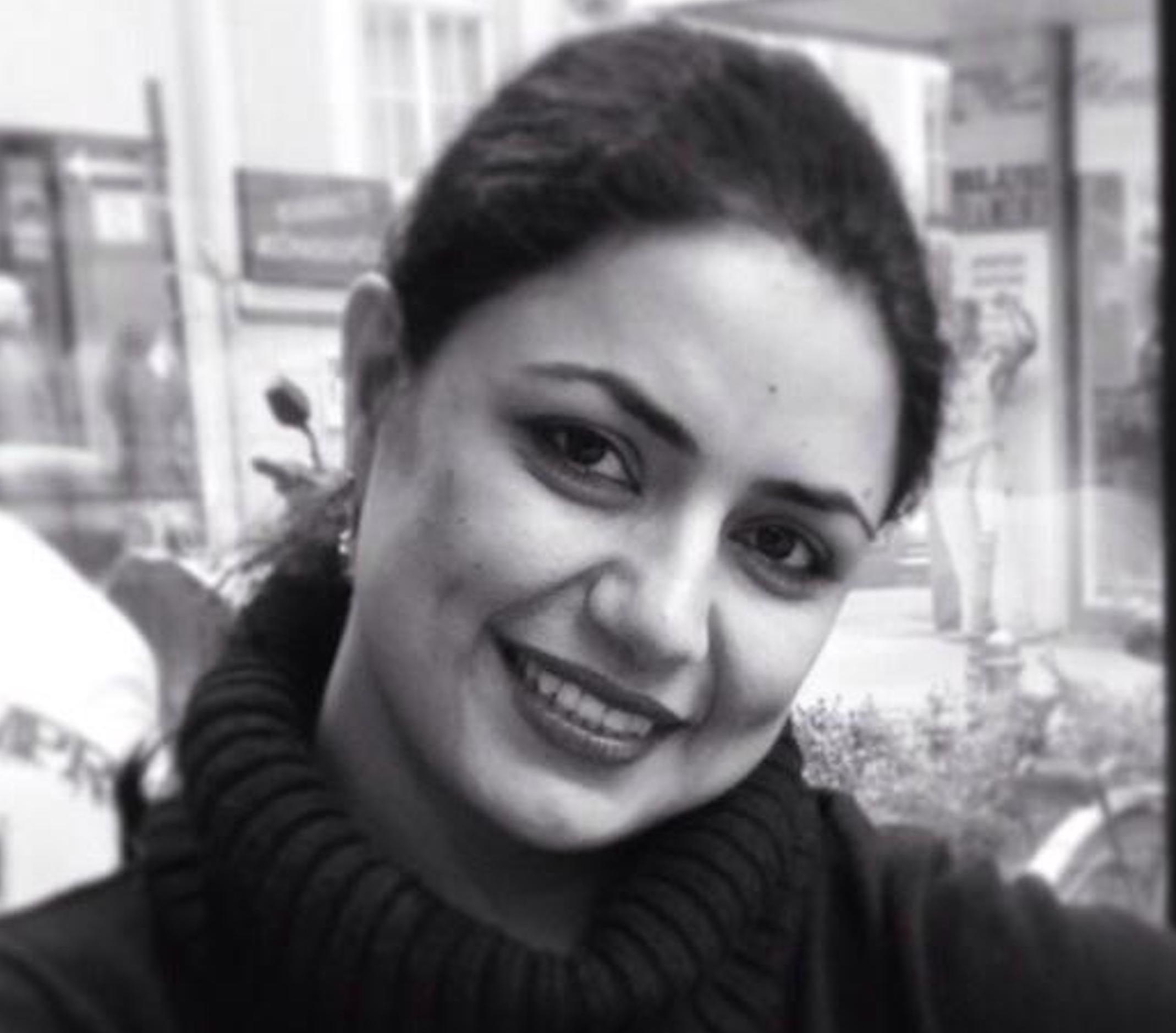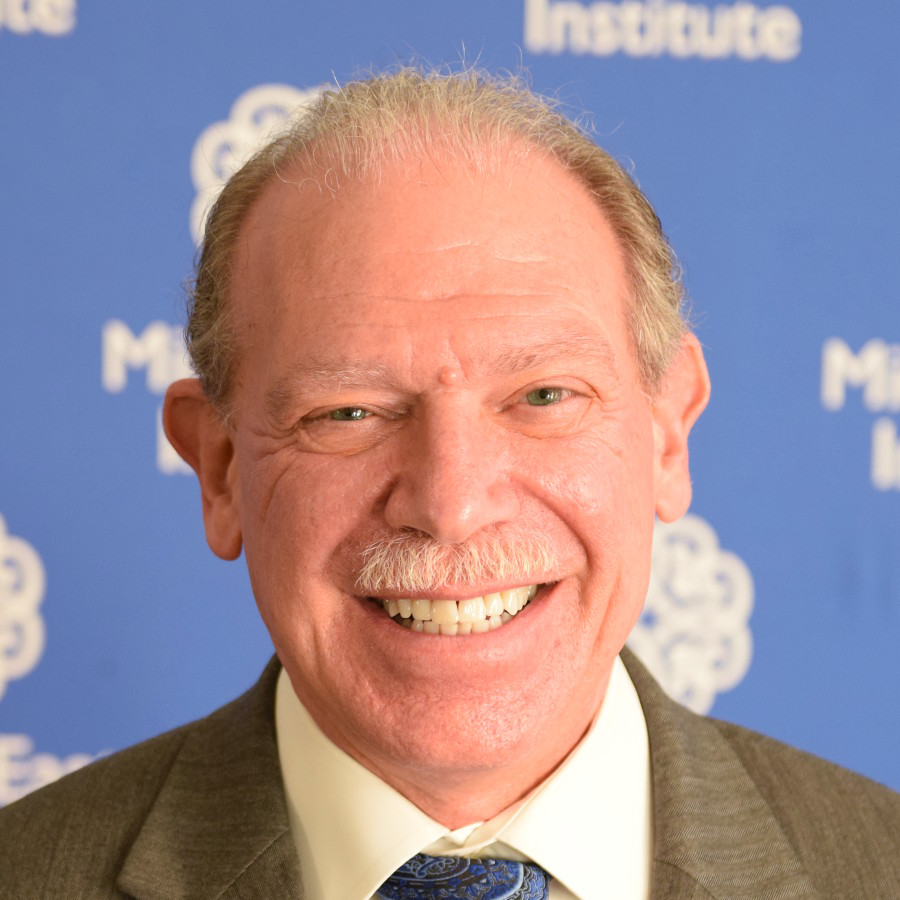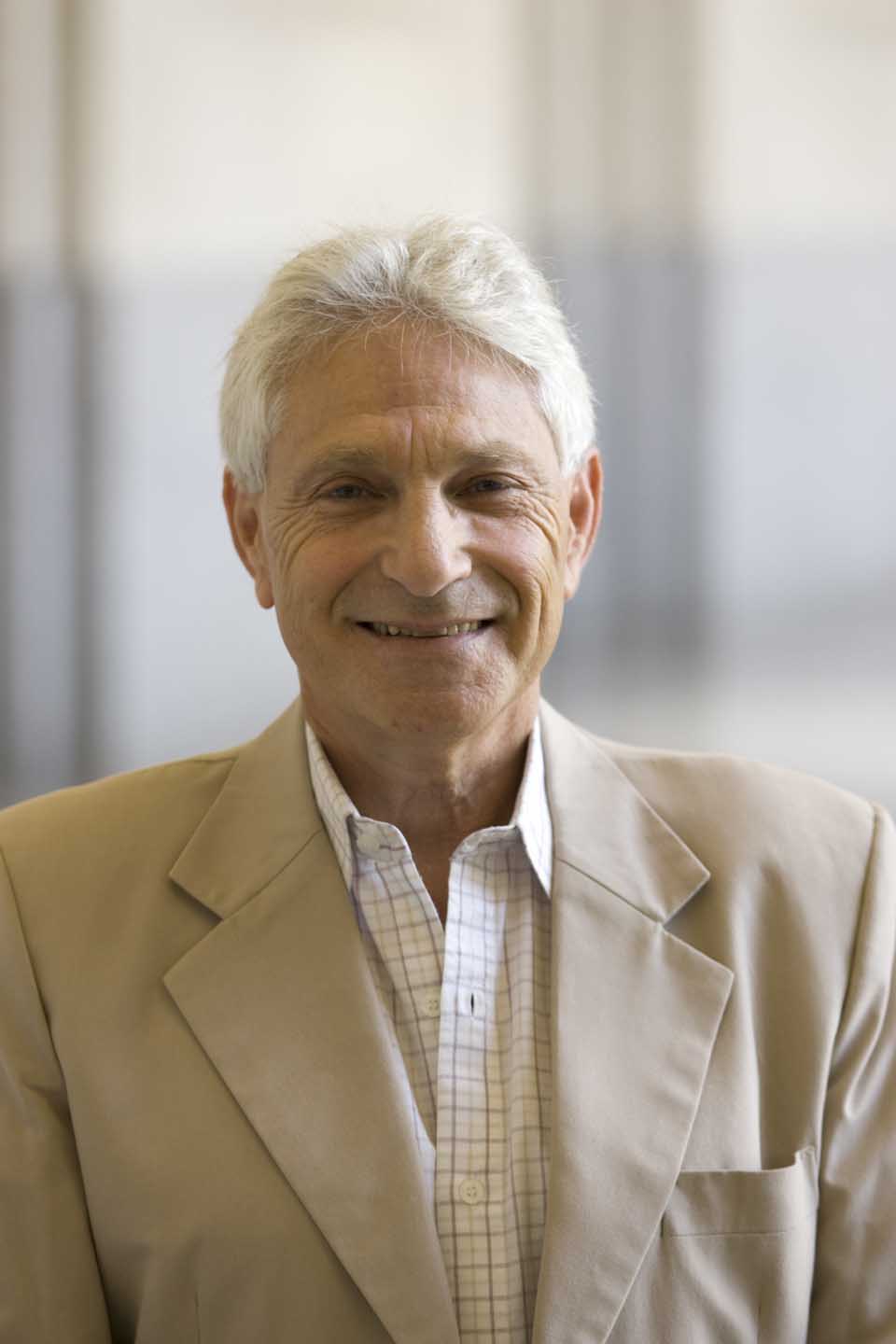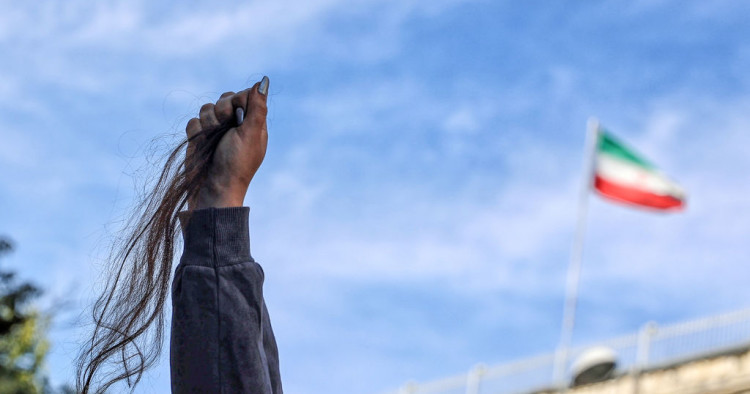Contents:
- Iranian women’s uprising: Too personal and too political
- Yemen takes the stage in New York
- Lapid at the UN: Votes and vision
- Afghanistan’s Taliban continue to wrestle with girls’ schooling
Iranian women’s uprising: Too personal and too political
Farnaz Seifi
Non-Resident Scholar

-
Women are the vanguard of the new wave of Iranian protests while, for the first time, men are joining them in support.
-
These demonstrations displayed the most radical and geographically most widespread collective action in modern-day Iran to date.
The renowned Iranian intellectual Shahrukh Meskoob once summarized the politics of the Islamic Republic of Iran in two words: “veiling and vilification [hijab va fohsh]!” For more than four decades, Iranian women had fought back against the gender apartheid regime in various ways. But since Saturday, Sept. 17, they have become the vanguard of countrywide protests. The ongoing demonstrations have already displayed the most radical and geographically widespread collective action under the Islamic Republic to date. The movement was sparked by the death of Mahsa Amini, an innocent 22-year-old woman who was detained by the Islamic regime’s so-called Moral Security Police.
Protests have spontaneously spread from one city and province to the next. Many women courageously stand in front of heavily armed officers and remove their headscarves to burn or toss aside. Many others, according to an ancient mourning ritual, have filmed themselves cutting their long hair as an expression of dissent and grief. The role and the unprecedented bravery of young women and teenage girls are among the main characteristics of these demonstrations. Most are prepared to physically engage with the security forces to defend themselves; many are the same age as Mahsa. Their generation, born around 2000, came of age in an era of the internet and global communications. Older, often male analysts previously dismissed them as a generation drawn into private life without a political cause or a stomach for activism. Yet they proved to be exceptionally brave and militant because, to them, the personal is political. So far, according to official numbers, 41 people, including 4 children, have been killed, but the unofficial numbers are higher.
This round of protests significantly differs from the previous waves, between 2018 and 2020. Dozens of small localities, such as Shirvan in North Khorasan province or Kish and Qeshm islands in the south, which were previously silent, are now embroiled in demonstrations. Videos of the crowds resound with a concert of languages and accents all chanting the same slogan. Unlike in previous years, the urban rallies have not been limited to places traditionally or symbolically known as sites of protest. Sometimes they ensue simultaneously in all corners of a city and in neighborhoods with different demographic and economic profiles.
The Islamic Republic has created one of the world’s largest systems of mass surveillance and mass detention against women. Only once, a police official released some statistics: in 2013, more than 200,000 were apparently arrested and 3 million received a warning. It’s rare to find an Iranian woman who has not been harassed or detained for wearing clothing slightly different from what the Islamic government deems appropriate. Today, their profound demand to take back the rights to their own bodies marks a rare political transformation with no leader and no possibility of any political faction laying claim to it.
One time before, at the beginning of the 1979 revolution, Iranian women poured out into the streets to oppose the compulsory hijab. Then, “the revolutionary men” — whether secular or religious, from the right or the left — did not support them. Women have often been told that their right to choose their dress is a marginal issue in Iran’s broader struggle for freedom and democracy. Now, finally, many men are coming to the streets and chanting “Women, Life, Freedom” along with “Death to the Dictator.” This is the principal difference between the current protests and those Iran has seen over the past 40 years.
Yemen takes the stage in New York
Gerald M. Feierstein
Distinguished Sr. Fellow on U.S. Diplomacy; Director, Arabian Peninsula Affairs

-
At the United Nations General Assembly, the Yemeni government was invited to a meeting of the U.S. and GCC foreign ministers, and the U.N. announced it secured initial funding needed to address the climate threat posed by the FSO Safer oil storage ship.
-
Following Yemen’s successes at UNGA, focus will now shift to securing a fourth round of the ceasefire that has been in effect since April but is due to expire on Oct. 2.
Yemeni Presidential Leadership Council (PLC) chair Rashad al-Alimi’s participation in the United Nations General Assembly’s (UNGA) opening week succeeded in his fundamental objective of refocusing international attention on the continuation of Yemen’s civil war, now entering its ninth year. In his address to the General Assembly, Alimi reiterated that the PLC remains committed to a comprehensive resolution of the Yemen conflict consistent with the Gulf Cooperation Council’s (GCC) initiative and relevant U.N. Security Council resolutions (UNSCR), notably UNSCR 2216. That 2015 declaration by the Security Council lays out the fundamental principles for a peaceful resolution of the conflict. In doing so, Alimi made clear that responsibility for the absence of movement toward a comprehensive peace rests with the Houthis and their Iranian allies.
In positive news during the New York visit, the U.N. announced it had secured the needed finance for the first phase of the mission to resolve the environmental threat posed in the Red Sea by FSO Safer, a floating oil storage ship. Additional funding will be needed to complete the project. But the removal of the more than 1 million barrels of oil currently aboard the deteriorating vessel will ease concerns about the potential catastrophic impact on the Red Sea waters, should it sink.
Yemen’s internationally recognized government under the leadership of the PLC, organized in April, also advanced its integration into the broader Gulf region when it was invited to join U.S. Secretary of State Antony Blinken’s meeting with his six GCC counterparts on the margins of the UNGA opening. Egyptian, Jordanian, and Iraqi ministers also joined the meeting, thus resurrecting a traditional feature of the UNGA opening week. For the Yemenis, the invitation to join the sideline talks made up for the perceived snub in July, when the Yemeni leader was notably absent from President Joe Biden’s meeting with his Gulf counterparts.
Following Yemen’s successes at UNGA, focus will now shift to efforts to secure a fourth round of the ceasefire that has been in effect since April. The current two-month agreement is due to expire on Sunday, Oct. 2. U.S. Special Envoy Tim Lenderking broke away from the meetings in New York to make a quick trip to Jeddah to advance discussions on the ceasefire extension, while U.N. Special Envoy Hans Grundberg is understood to be formulating an additional package of confidence-building measures with the hope of expanding the agreement. Once again, the question will be whether the Houthis commit to sustaining the truce and whether they will honor the commitments they have already made, most notably to lift the siege of Yemen’s third-largest city, Taiz.
Lapid at the UN: Votes and vision
Mark A. Heller
Non-Resident Scholar

-
Israeli Prime Minister Lapid’s U.N. speech was not about domestic politics; he doesn’t need the Palestinians to differentiate himself from Netanyahu in the upcoming election.
-
Instead, there was a more banal explanation: Lapid may have simply wanted to show that national leaders really should attend to “the vision thing.”
In countries where political leaders can be publicly criticized, their speeches at the United Nations are liable to be condemned by domestic opponents as “political,” especially if they happen to be delivered close to election time. Predictably enough, Israeli Prime Minister Yair Lapid’s address at the General Assembly last week, wherein he endorsed the principle of “two states for two people” less than six weeks before yet another closely contested general election, was immediately denounced by opposition parties. Likud leader Benjamin Netanyahu, who as prime minister had himself endorsed that same principle at the General Assembly in 2016, attacked Lapid’s speech as “full of weakness, defeat, and capitulation”; and Lapid’s own interior minister, Ayelet Shaked, who has now struck out on her own, slammed it as a ridiculous election stunt.
The major flaw in her analysis, and that of others who share her perspective, is that there is no obvious electoral benefit to Lapid for stating his view. After all, Lapid’s own claim to the contrary notwithstanding, majority support in Israel for “two states” faded away a long time ago, and those who do still approve the idea already overwhelmingly favor either him or his likely coalition partners. Endorsing Palestinian statehood, even if the endorsement is hypothetical and highly contingent, will not help steal a single vote away from the right-wing bloc. At most, it could attract a few votes from the leftist parties whose cooperation Lapid will need to assemble a governing coalition.
Besides, foreign policy and defense issues, including the Palestinians and Iran, have virtually disappeared from the electoral debate. Apart from the cost of living, about which no party has any coherent platform, this election — if it is about anything at all, beyond the sectoral interests of some small, identity-based parties — is about securing or undermining the civility of the public sphere, and especially the integrity of a judicial system that could still send Netanyahu to jail. And on this issue, no reference to the Palestinians is necessary in order for Lapid to differentiate himself from Netanyahu.
So if Lapid did have any political manipulation in mind as he stood at the podium in New York, it was probably focused on Mahmoud Abbas (Abu Mazen), who was scheduled to speak the next day. By preemptively conceding the principle that Abu Mazen was likely to stress, but in a way that had no immediate operational implications, Lapid could take some of the rhetorical wind out of Palestinian sails while putting no concrete interest at risk. If that was indeed the case, then Lapid might have demonstrated that some politics, at least, is not entirely local. It’s even possible, though, that that there was a more banal explanation: Lapid just wanted to show that national leaders really should attend to “the vision thing.”
Afghanistan’s Taliban continue to wrestle with girls’ schooling
Marvin G. Weinbaum
Director, Afghanistan and Pakistan Studies

-
The Taliban’s indecision on girls’ education reveals an inability to reach a consensus on the issue within its senior ranks.
-
Hostile domestic reactions and international opprobrium could be having some effect and may result in schools reopening, though with guidelines conservative enough to satisfy hardliners.
It was just over a year ago that Afghanistan’s Taliban regime announced girls would be barred from attending secondary school. Some months later, however, Taliban authorities promised that when classes resumed in the spring, education would be open to girls in all grades. But when girls appeared for instruction on March 23, 2022, they found their entry blocked. It appears that the Taliban’s supreme leader, Haibatullah Akhundzada, gave full approval for the policy reversal on religious grounds. The prohibition has been observed in all but a few communities in the country’s north, and the 1990s-era practice of holding clandestine classes in homes has resumed. While women have not been banned from entering universities, they face strict rules on mixing with men. Moreover, if they cannot attend or graduate from secondary schools, they will not be able to move on, and the pipeline of female students for universities will dry up.
Of all the grievances over Taliban rule, none has galvanized active popular opposition as much as the schooling issue. An online social media poll by the respected TOLOnews network found that 90% of Afghan respondents favor schools being open to girls beyond Grade 6. Peaceful public protests have increasingly erupted across the country, prompting the use of force to disperse demonstrators. Defying government policy, in early September local officials in eastern Paktia Province approved the reopening of five secondary schools to girls in two districts, only to reverse course a week later after receiving orders from Kabul. Meanwhile, international pressure on the Taliban over the issue has grown. Donor countries and others have been persistent in their criticism of the Islamic Emirate’s retrogressive social policies, and the issue of girls’ schooling features strongly in the continued withholding of political recognition from the Taliban government globally. The speeches at last week’s opening session of the U.N. General Assembly that sharply condemned the ban on girls’ education may also serve to embolden internal criticism of the regime.
The Taliban’s indecision on girls’ education reveals an inability to reach a consensus on the issue within its senior ranks. Many, including from the Taliban’s Haqqani wing, apparently favor allowing the reopening of the schools, while Haibatullah’s dominant, highly conservative Kandahar shura has continued to insist that Islamic principles and Afghan culture dictate that girls’ schooling should end with Grade 6. Earlier this month, Acting Educational Minister Noorullah Munir, a close associate of the supreme leader, drew wide criticism in Afghanistan and abroad for claiming, in a strikingly uncompromising speech, that Afghan families would riot if schools were reopened. But Munir’s removal from office last week possibly signals a policy change.
Hostile domestic reactions and international opprobrium on the schooling issue may be having some effect. The Taliban have long argued that the movement is not opposed to girls’ education under the “right circumstances.” Over the course of the year, the leadership often said that new plans covering secondary schools were in the making. It may come down to schools reopening with guidelines conservative enough to satisfy Haibatullah and his hard-core compatriots. But even then, secondary school for girls may not return quickly if the Taliban insist, in the absence of female teachers, on their not being taught by male instructors.
Shizah Kashif, a research assistant to Marvin G. Weinbaum, assisted with this article.
Follow on Twitter: @mgweinbaum
Photo by Ozan Guzelce/ dia images via Getty Images
The Middle East Institute (MEI) is an independent, non-partisan, non-for-profit, educational organization. It does not engage in advocacy and its scholars’ opinions are their own. MEI welcomes financial donations, but retains sole editorial control over its work and its publications reflect only the authors’ views. For a listing of MEI donors, please click here.













